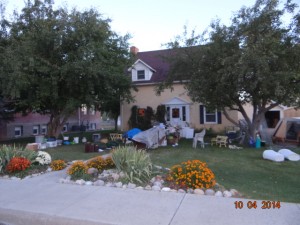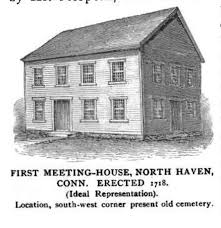I asked recently if houses can have their own personality. If the Yellow House does, how would I describe it after 7 years working, living, and creating there? A hint comes from the similar Sears Modern Home model (early 1900s) named the Puritan.
Since the UCC denomination evolved from the Puritans and Congregationalists,I sometimes reread their history. Not long ago I read Love and Hate in Jamestown: John Smith, Pocahontas, and the Start of a New Nation. These settlers of the Massachusetts Bay Colony did not call themselves Puritans; rather, the word is a derogatory name for people who live a life devoid of pleasure.The Puritans were a complicated people, known today for their extreme religious beliefs and judgmental and intolerant attitudes towards others. Odd that the Puritans developed into religious extremists and fuddy duddys since they started out as activists against religious persecution in England. They set out to the Netherlands with a basic idealism and a desire to create a better place in the world. They got mixed up with religious extremists and morphed into a stodgy, intolerant people by the time they came to North America. Witch burning? Yep.
Still, every culture has a few endearing qualities, and underneath their religious armor, the disciplined and successful Puritans embraced simplicity, like the Shakers who came later. They were hardworking and believed in education for all. Some believe that Puritanism was an important factor in the emerging democracy.
So, what kind of house would be named the Puritan? The overall feel would be plain, simple, no frills. The house would be sturdy, practical, functional. I googled Puritan house and Puritan architecture and discovered the following photos:
I also googled Cape Cod architecture and found a related style:
No doubt! The Yellow House shows a strong resemblance to Puritan architecture. It feels Puritan as well. 









